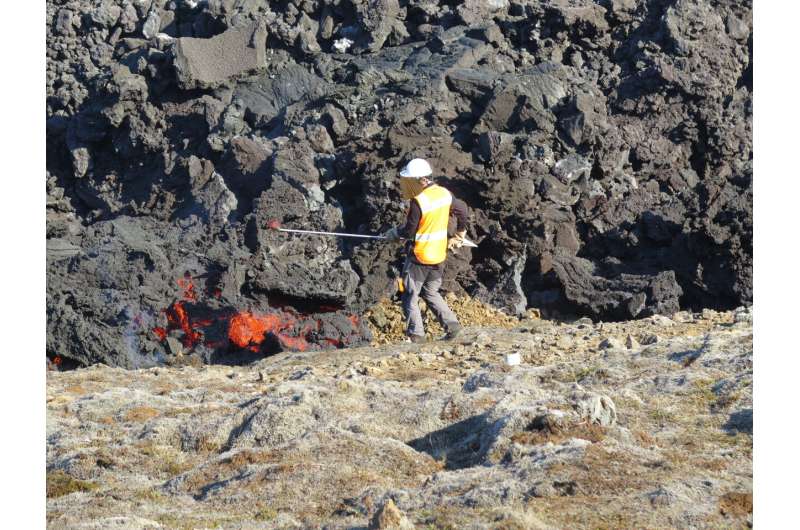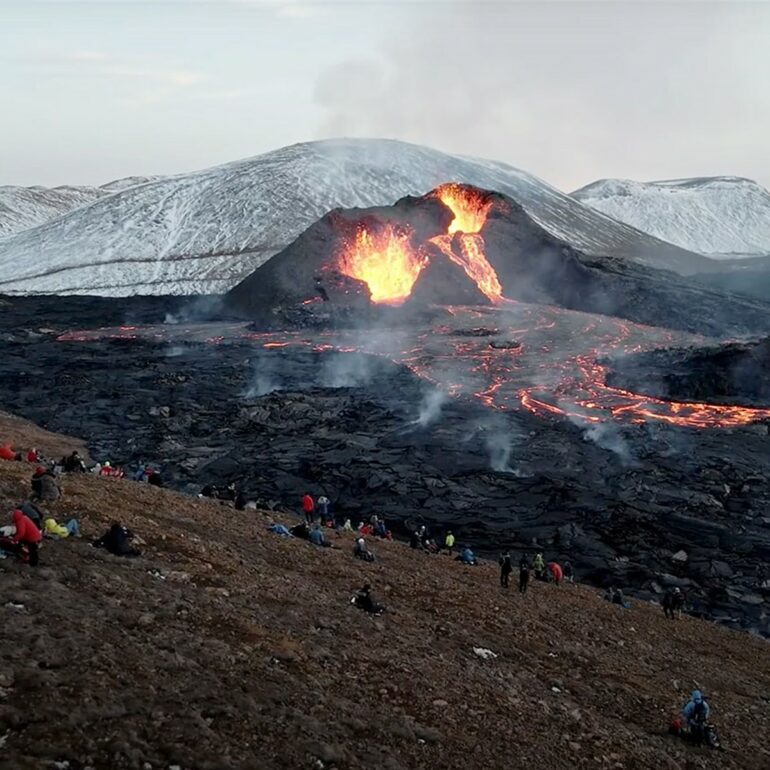The recent Fagradalsfjall eruption in the southwest of Iceland has enthralled the whole world, including nature lovers and scientists alike. The eruption was especially important as it provided geologists with a unique opportunity to study magmas that were accumulated in a deep crustal magma reservoir but ultimately derived from the Earth’s mantle (below 20 km).
A research team from University of Oregon, Uppsala University, University of Iceland, and Deutsches GeoForschungsZentrum (GFZ) took this exceptional opportunity to collect lava samples every few days in order to construct a time-integrated catalog of samples and to monitor the geochemical evolution throughout the eruption to a degree of detail rarely achieved before. Usually, when volcano scientists look at past eruptions they work with a limited view of the erupted materials—for example older lava flows can get wholly or partially buried by newer ones. However, at Fagradalsfjall, the eruption was so well monitored and sampled that scientists had a chance to capture the evolution of an Icelandic eruption in near real-time.
The team were interested in oxygen isotopes. Why? Because oxygen makes up about 50% of all volcanic rocks and its isotope ratios are very sensitive tracers of mantle and crustal materials. In this way, oxygen isotopes can help scientists to determine if magma is mantle-derived or if it interacted with crustal materials as it made its way to the surface. However, in addition to oxygen, the other vast suite of elements making up the volcanic rocks threw up some surprises. For instance, the team observed that this single eruption contains roughly half of the entire diversity of mantle-derived magmas previously recorded for the whole of Iceland.
In brief, geochemical results show that the latest Iceland eruption was supplied by magmas derived from multiple sources in the Earth’s mantle, each with its own distinctive elemental characteristics. To the amazement of scientists, each of these domains had identical oxygen isotope ratios. This result was remarkable and has never been observed before at an active eruption. The study provides new and compelling evidence for distinct mantle-sourced magmas having uniform oxygen isotope ratios, which can help us to better understand mantle dynamics and refine mantle models for Iceland.

Collecting red-hot lava samples at the Fagradalsfjall eruption site. Samples were collected regularly in order to create a detailed time-line of erupted material for analysis. © Jóna Sigurlína Pálmadóttir, University of Iceland
The research was published in Nature Communications.
More information:
I. N. Bindeman et al, Diverse mantle components with invariant oxygen isotopes in the 2021 Fagradalsfjall eruption, Iceland, Nature Communications (2022). DOI: 10.1038/s41467-022-31348-7
Provided by
Uppsala University
Citation:
Iceland volcano eruption opens a rare window into the Earth beneath our feet (2022, June 29)

